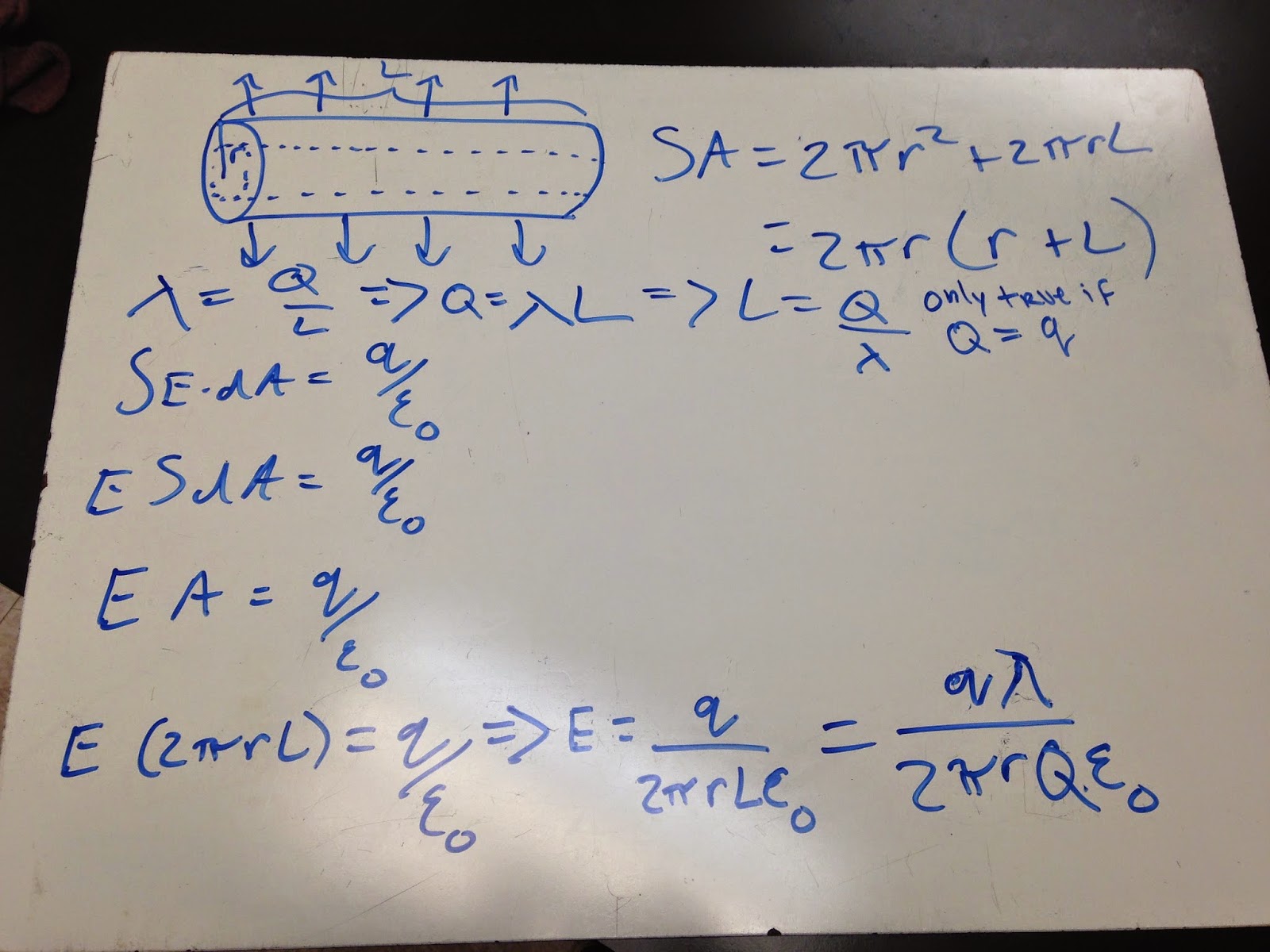| A sphere of radius r inside a larger sphere of radius r shares the same charge density (Q/V). This allows us to create a relationship between the charge inside both spheres and the radius of the spheres (Q/R^3 = q/r^3). Since the flux through the sphere smaller radius is E dot 4*pi*r^2, and the charge enclosed by that sphere is Q*r^3/R^3, we see that we can solve for the electric field caused the charge enclosed in the smaller sphere. Also, we can see that if the radius of the "Smaller" sphere is the same as that of the larger sphere, the electric field reduces to that kq/r^2, the same as the electric field of a point charge at a distance r away. |












No comments:
Post a Comment